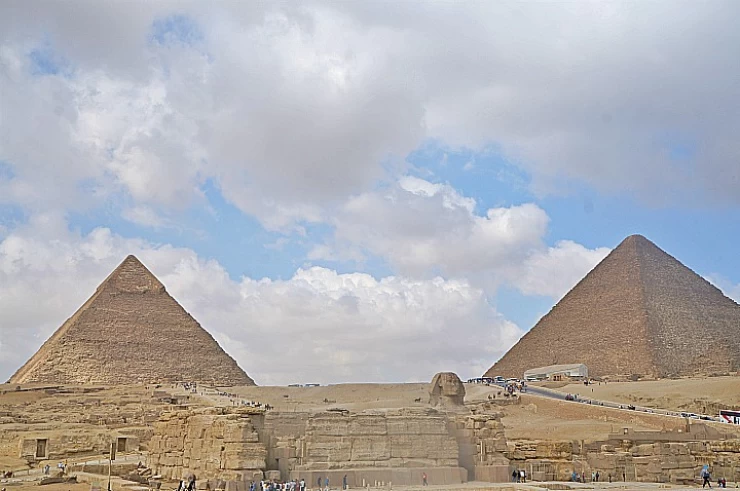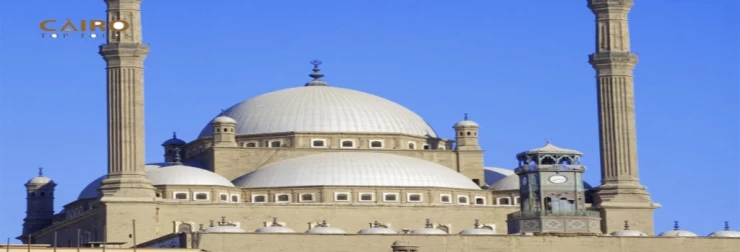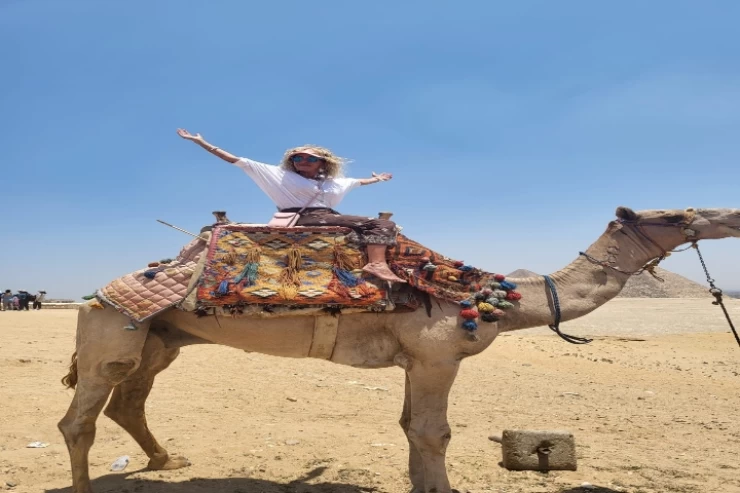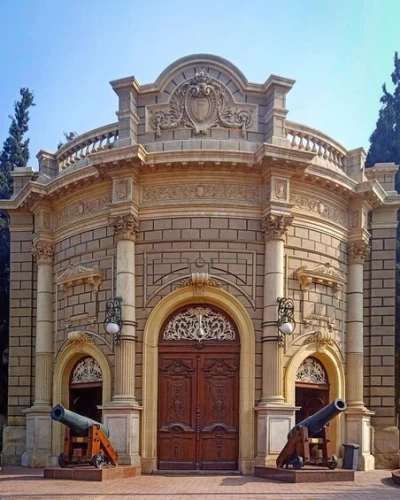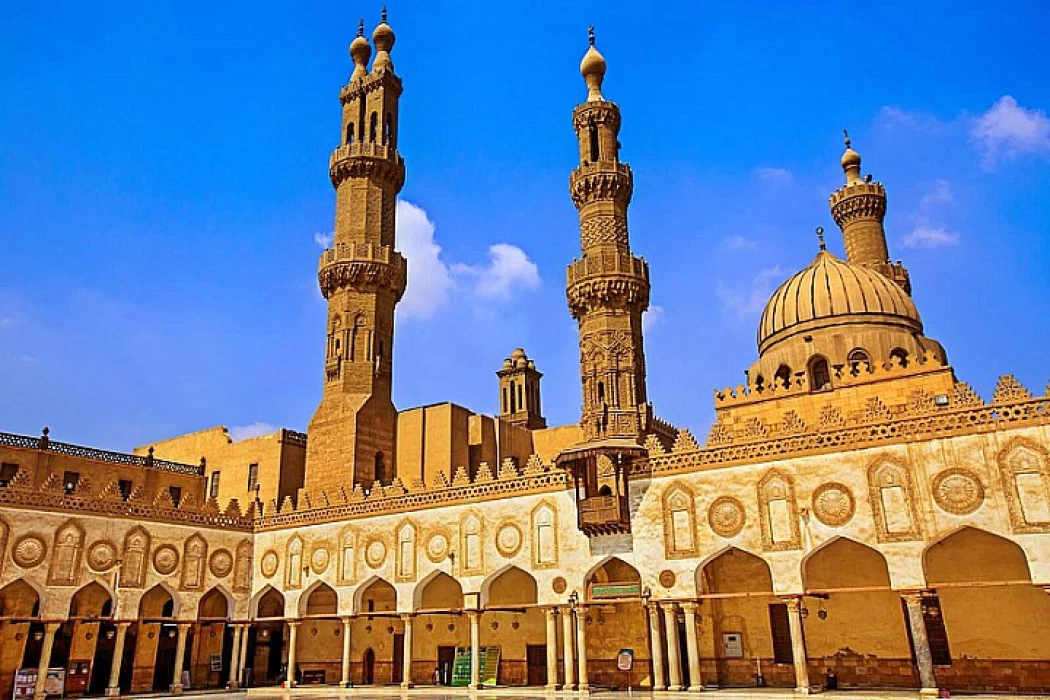
Islamisches Kairo
In Ägypten haben wir nicht nur eine großartige pharaonische Geschichte, sondern auch eine großartige islamische Geschichte, auf die wir stolz sind. Das islamische Denkmal in Kairo ist das mittelalterliche Viertel von Kairo und eine der ältesten islamischen Städte der Welt
Altes Kairo
Auch wenn es nicht mehr das zentralste Gebiet der modernen Hauptstadt Ägyptens ist, ist das islamische Kairo dennoch eine lebendige Erinnerung an die interessante Vergangenheit der Stadt und eine der beliebtesten Aktivitäten in Kairo.
Das islamische Kairo zu bereisen kann eine schwierige Aufgabe sein. Es ist ein ziemlich großes Gebiet, einschließlich der alten Stadt der Fatimiden sowie der Gebiete, die nach Süden bis zur Zitadelle von Saladin und zur Moschee von Ibn Tulun reichen.
Höhepunkte des islamischen Kairo:
Das prächtigste Freilichtmuseum für islamische Kunst heißt El-Moez Street. Es war die Hauptstraße durch die Stadt, als sie im 11. Jahrhundert erbaut wurde. Hier wurden Moscheen, Schulen, Sabils, Mausoleen und Paläste gebaut. Der nördliche Teil der Straße (zwischen Bab El-Fotouh und Al-Azhar Street) wurde neu renoviert. Dies ist einer der grafischsten Teile von Kairo. Der Qala'un-Komplex ist einer der bekanntesten in Kairo.
Sie können den Tag problemlos in dieser Gegend verbringen und am Abend auf dem berühmten Markt von Kairo aus dem 14. Jahrhundert, Khan Al-Khalili, landen. Die Renovierungsarbeiten am südlichen Straßenabschnitt (vom Ghouriya-Komplex bis Bab Zuweila) begannen im Jahr 2011. Weiter im Bereich von Khan Al-Khalili befindet sich die Al-Azhar-Moschee.
Die Burg Salah Al-Din Al-Ayyubi enthält 4 Moscheen: „Muhammad Ali-Moschee, Moschee und Madrasa von Al-Nasir Qalawun, Moschee von Sulaiman Pascha Al-Khadim - Sariyat Al-Jabal, Moschee von Ahmad Katkhuda Azban - Moschee von Al-Azab ”
Ihr Besuch der Moscheen in der Zitadelle von Salah al-Din al-Ayyubi, einschließlich der Muhammad Ali-Moschee und der Masjid von al-Nasir Muhammad bin Qalawun, ist ein architektonischer Schlanker der ägyptischen islamischen Geschichte in der Zeit von Salah al-Din.
Vergessen Sie beim Besuch des Schlosses nicht Ihren Besuch in den im Schloss befindlichen Museen, einschließlich des Fahrzeugmuseums, des Militärmuseums und des Gartenmuseums, da diese eine große Anzahl seltener Artefakte enthalten, da Sie sie überall sehen können außer in Salahuddin Castle.
Gegenüber der Zitadelle befindet sich der massive Sultan-Hassan-Komplex, der als Pyramide der islamischen Architektur bekannt ist und im 14. Jahrhundert vom Mamluk-Herrscher Al Sultan Hassan erbaut wurde. Diese riesige Moschee umfasst eine Madrassa (religiöse Schule, um die vier Riten einer islamischen Sekte im Islam zu unterrichten) und zeigt einige der beeindruckendsten architektonischen Elemente in jeder Moschee der Stadt.
Die Moschee von Ibn Tulun ist nur wenige Gehminuten von der Zitadelle von Saladin und der Moschee von Sultan Hassan entfernt. Es wurde 872 n. Chr. gegründet und ist die älteste Moschee im islamischen Kairo und die größte auf dem Landweg. Es ist ein wirklich beeindruckender Ort, aufgrund seines einzigartigen samarranischen Baustils und der Tatsache, dass er gebaut wurde, als Ägyptens Führer aus dem Irak kamen. Zusätzlich ist das Gayer-Anderson House Museum mit seinen Außenwänden verbunden.
Erleben Sie den Zauber Ägyptens, wo alles beginnt, mit dem professionellen Team von Cairo Top Tours. Starten Sie jetzt Ihr Abenteuer und erleben Sie den besten Urlaub in Ägypten. Sie finden hier die besten Ägypten-Osterangebote und -Urlaube 2022.
Der Frühling in Ägypten ist perfekt und die Atmosphäre ist unsagbar schön. Wir organisieren tolle und unterhaltsame Ägypten Ausflüge wie Kairo Tagestouren. Schauen Sie sich unsere Ausflüge und Reisen mit angemessenen Preisen an, die für alle Arten von Touristen im Jahr 2022 geeignet sind, sowie Ägypten Landausflüge, zusätzlich zu Kairo Tagestouren vom Flughafen und Kairo Zwischenlandung Tour.
Sie können das antike Theben erkunden, beginnend mit dem Tal der Könige und dem Westufer von Luxor, sowie den Karnak-Tempel und den Luxor-Tempel. Ägypten Touren erweitern, um den Tempel von Edfu von Gott Horus der Falke, und Kom Ombo Tempel und Abu Simbel zu decken. All dies während Assuan-Tagestouren und Luxor-Tagestouren.
Das Rote Meer ist einer der malerischsten Orte, die Sie in Ägypten besuchen können, genießen Sie einige Meeresabenteuer und Wanderaktivitäten wie Hurghada Tagestouren und Sharm El Sheikh Ausflüge. Sichern Sie sich jetzt Ihren Platz in unseren Ägypten-Reisepaketen und Wüstensafari-Trips, um von Kairo aus die Oasen Siwa, Bahriya und Farafra sowie die Oasen Dakhla und Kharga zu bereisen! Wir sehen uns wieder.
Islamic Cairo is located in the heart of the modern metropolis of Cairo, a place of fascination with its past, culture and beliefs that have been practiced over the years. Also known as Old Cairo or Medieval Cairo, the area has been recognized and declared by UNESCO as an architectural heritage under its protection. It is home to impressive mosques, madrasas and other buildings dating back to the golden age of the Islamic Empire. For tourists, Islamic Cairo is a unique place that transports them to a time when the cries of Musasin could be heard around every corner and people's noses smelled warm spices.
go back to the seventh century when the Arab conquerors first introduced Islam into Egypt. Through the centuries, Cairo rose and became the center of the Islamic Empire under various dynasties: the Fatimids, Ayyubids, Mamluks, as well as the Ottomans. Each of these contributed and left traces of the architectural magnificence and cultural depth of the present surroundings.
Once it bloomed into its glorious days, Islamic Cairo was a thriving metropolis of commerce, schools, and temples. In the 10th century, the Fatimids moved to Egypt and made Cairo their political capital, erecting such memorable edifices as al-Azhar Mosque and the original city enclosure. Later, the Mamluks built their marvelous mosques, tombs, and madrassah structures, which embellished the city further. Even today, Islamic Cairo is still considered to be one of the least altered urban areas containing medieval Islamic architecture throughout the entire world.
When it comes to the variety of places to see in Islamic Cairo, the visitors will surely be loaded with so many sights. Here is a list of some of the landmarks that one should not miss:
1. Citadel of Salah El Din Historical Relevance: Built in the 12th century under the orders of the great Salah El Din (Tamerlane), the Citadel was constructed to protect the city of Cairo from the Crusaders’ threats.Main Characteristics of Construction: The citadel illustrates the example of military architecture of its typical medieval period, characterized by high walls and lookout points. Inside its grounds, tourists can come across the impressive Mosque of Muhammad Ali with its tilted spires and lavish decoration. Overlooking Opportunities: The Citadel is a beautiful and scenic old fortress that has an expansive view over Cairo, enabling you to see even the pyramids clearly at very far distances in good weather, which makes it ideal for taking pictures.
It was Founded in 970 AD, the Al Azhar Mosque is among the oldest universities in the world and a representation of education in Islam.
Art: The mosque is preserved as a fine architectural work of art typical of the Fatimid era. Its complex has exquisitely carved geometric shapes, stucco designs, and a beautiful marble floor. Their artworks in the form of buildings were, however, embellished by other empires, creating a mix of architectural styles under the umbrella of Islamic art.
Spirit: It’s still a religious hub and a cultural center, bringing in scholars, tourists, and other visitors from every corner of the earth. Its atmosphere is comfortable, which allows people a break from the noisy city.
Vibrant Market: Founded in the 14th century, Khan El Khalili is one of Cairo’s most famous souks (markets). A labyrinth of narrow alleys brimming with shops, it’s the perfect place to discover traditional handicrafts, jewelry, spices, and souvenirs.
Historic Tea Houses: While wandering through the bazaar, take a break at one of the historic tea houses, such as El Fishawi’s, which has been serving tea and coffee to patrons for over 200 years. This is a prime spot for people-watching and soaking in the local culture.
Artisan Workshops: Many stalls offer a peek into Cairo’s artisanal heritage, with workshops where craftsmen create intricate gold jewelry, hand-blown glassware, and colorful textiles.
4. The mosque of Sultan Hassan
The Magnificence of Construction: This mosque completed in the 14th century is an epitome of Mamluk designs. Its walls are thick and vertical, with large arches creeping along with a central courtyard enclosing an ablution area.
Center for Educational Purpose: This construction was intended to be a mosque at first and a madrassa (school) attached to it. The purpose was to train pupils in the four Sunni legal schools.
Awesome Features: The stunning mosque has marble inlay, detailed wood carving, and an imposing mihrab, which is a collection of the best works done during the Mamluk’s reign inside.
Cultural Engagements in Islamic CairoIslamic Cairo is not limited to the visit of some ancient archives and churches; it is a cultural experience. So here are some of the activities that could be part of your visit:
1. Attending a Sufi music performance at Ar-Tanura Egyptian Heritage Dance TroupeSpiritual Music: Not only is the venue located at Wekalet El Ghouri an ancient building that serves as a cultural hub, but the performance combines Sufi music and whirling dervishes that are artists performing an age-old dance of spirituality and unison with God.A Vivid Picture: All the spirituality that one associates with Islamic Cairo has easily been stripped away in the loud, festooning music, bright, glittering costumes, and the dervishes spinning around in an entrancing manner.
2. Studying Genre and Context of Islamic Art at the Museum of Islamic Art . An amazing exhibit: The Islamic Arts Museum Malaysia harbors the most extensive collection of Islamic arts ever assembled, consisting of textiles, ceramics, woodworks, and pages and documents from across the Islam dome. Explore: Objects from different Islamic empires and their cultures and achievements in arts within the Islamic world can be found.







